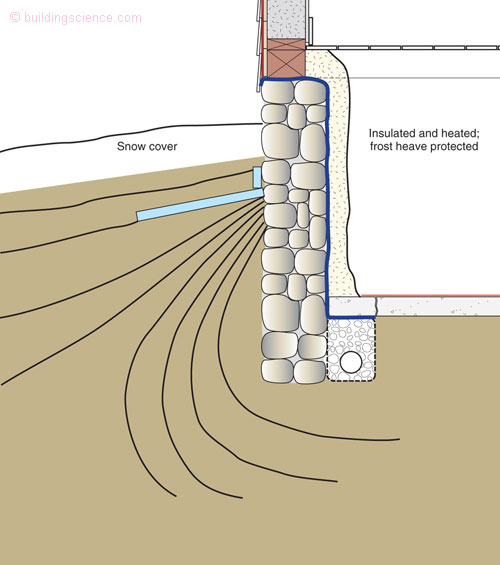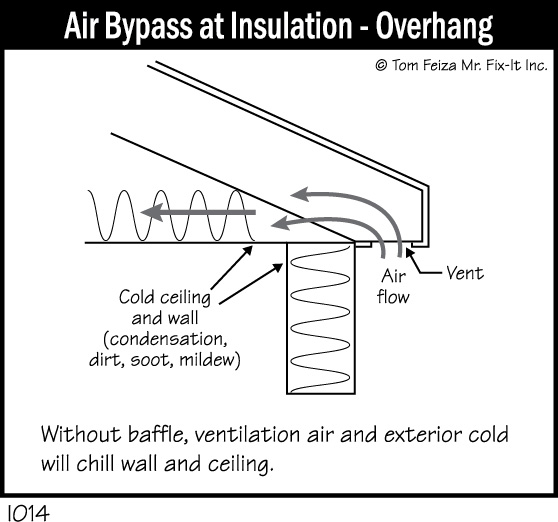I have seen mega frost in attics where r40 light density fibreglass was on the attic floor and the tegular mushroom vnets and or ridge vents were covered with snow.
Frost unheated attic wall.
This horizontal layer has to extend throughout the building area outward also.
This winter i hav seen water run out of wall assemblies with fibreglass batting in the framing and rigid foam board on the exterior of the sheathing.
When warm air from inside the house escapes traveling up through the bypasses the moisture condenses on the roof boards and rafters where the frost can form.
And it would not add to much weight to attic size is 550 sq.
Should we be concerned.
There is also an electrical switch with frost on the screw heads on that wall.
When the moisture gets into the attic it condenses on the roof.
I sealed all the attic bypasses i could find and stapled down plastic sheets between the joists before blowing in loosefill cellulose.
Often inexpensive foam pipe insulation is enough for moderately cold climates.
The final step is attic ventilation.
Frost accumulates in attics when moisture laden air from the house gets up there when it s cold.
That s about it pretty simple.
The common solutions to this ice problem are to use a higher powered fan use a larger diameter shorter duct run and wrap the pipe with better duct insulation.
A michael maines answers and gives advice on the question about bath fan venting for cold climates.
An alternative for such issue is to design a horizontal layer placed under the foundation of the entire building.
This type of frost wall won t work for an unheated building type.
Should i do anything about my attic ventilation.
I m having problems with frost forming on the roof sheathing in my unheated attic.
What can we do.
For severe climes opt for wrapping problem pipes with thermostatically controlled heat tape from 50 to 200 depending on length which will turn on at.
Attics with pull down attic stairs should have attic stair insulation covers installed.
Victorian home much thanks.
The garage is unheated and the walls ceiling are insulated.
When the outside temperature rises again the frost thaws water collects and can leak into.
But plumbing pipes in an unheated area such as an attic crawl space and garage are at risk of freezing.
There is also a vapor barrier over the insulation.
Attic vapor barrier detail for cold climates the best approach for a vented attic in a cold climate is installing a layer of drywall with a good coat of latex paint the paint creates a semi permeable vapor barrier.
My husband says cold air is coming through the outside soffit and there is no way to insulate this.
If the attic has blown in cellulose check to see if there is a vapor barrier and confirm the cellulose insulation is spread evenly throughout the attic floor.










